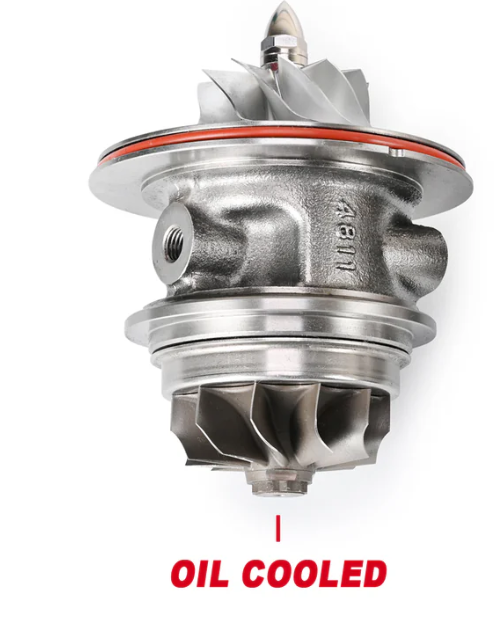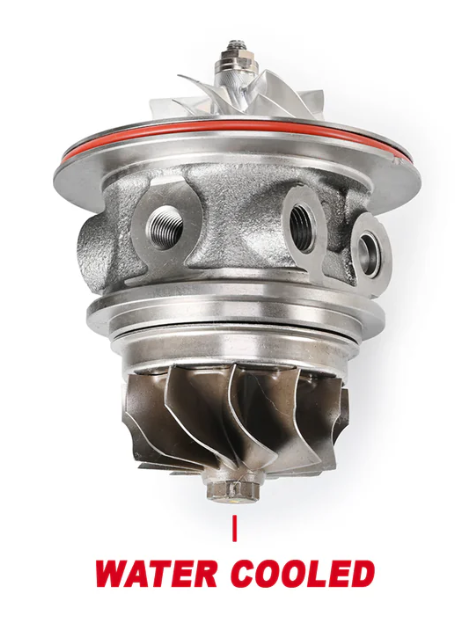AUTOWORKS
The key to your vehicle's performance
We understand it is not just a car – it is an extension of your passion. We know that is important. This is why we offer everything automotive. We offer all your automotive needs and desires.

Turbochargers are a cornerstone of modern performance and efficiency, but not all turbos are created equal—especially when it comes to how they’re cooled. The two most common designs are oil-cooled and water-cooled turbos, each with distinct advantages and trade-offs. In this article, we break down how these systems work, how they affect reliability and performance, and when to choose one over the other.
1. How They Work Oil-Cooled Turbos  Oil-cooled turbos rely solely on engine oil to lubricate and cool the turbo’s bearings. The oil flows through a small gallery in the turbo housing, extracting heat generated by exhaust gases and friction in the shaft and bearings. • Lubrication & Cooling: Combined in a single circuit • Cooling Mechanism: Oil absorbs heat from the bearing housing and dissipates it in the engine’s sump Water-Cooled Turbos
Oil-cooled turbos rely solely on engine oil to lubricate and cool the turbo’s bearings. The oil flows through a small gallery in the turbo housing, extracting heat generated by exhaust gases and friction in the shaft and bearings. • Lubrication & Cooling: Combined in a single circuit • Cooling Mechanism: Oil absorbs heat from the bearing housing and dissipates it in the engine’s sump Water-Cooled Turbos  Water-cooled turbos use engine coolant in addition to oil. Coolant circulates through a separate passage around the bearing housing, providing a secondary means of thermal control. • Dual Circuit: Oil for lubrication, coolant for thermal management • Thermosiphon Effect: After shutdown, coolant can continue to circulate and cool the turbo due to convection Feature Oil-Cooled Turbo Water-Cooled Turbo Installation Simplicity Simpler (fewer lines, no coolant tap) More complex (requires coolant lines and routing) Cost Lower Higher (more machining and components) Retrofitting Difficulty Easier Harder (coolant plumbing needed) Water-cooled setups introduce more plumbing and potential failure points but offer thermal performance that can justify the cost in demanding setups. 4. Applications & Suitability • Oil-Cooled Turbos are common in older designs, smaller turbos, or applications where cost and simplicity are priorities. They're often found in budget turbo kits, motorbikes, and some OEM applications. • Water-Cooled Turbos are favoured in modern OEM turbo engines (e.g. VW EA888, Ford EcoBoost, Subaru FA engines) and aftermarket builds pushing serious boost or endurance. 5. Maintenance Considerations • Oil Quality Matters More in Oil-Cooled Systems – poor oil can quickly break down or coke inside the turbo. • Coolant System Integrity is Vital in Water-Cooled Setups – leaks or air pockets can result in insufficient cooling or hot spots. • Turbo Timers or Idle Time – oil-cooled turbos benefit significantly from a cooldown period; water-cooled turbos are more tolerant of shut-downs after load. Conclusion: Which Is Better? It’s not about which is better universally—it’s about application. • Choose oil-cooled if: o Simplicity is key o The turbo will see short bursts of boost o Cost is a limiting factor o You already have a robust oil cooling setup • Choose water-cooled if: o The turbo sees sustained high-load use o You're building for longevity and OEM-like reliability o You want to reduce heat soak and oil coking o Your engine already supports water cooling plumbing Final Thoughts While oil-only turbos still have a place, especially in light-duty or cost-sensitive builds, the shift toward water-cooled turbos in OEM and high-performance aftermarket applications highlights their superior thermal control. In the world of high boost, high stakes, and high heat—cool heads prevail.
Water-cooled turbos use engine coolant in addition to oil. Coolant circulates through a separate passage around the bearing housing, providing a secondary means of thermal control. • Dual Circuit: Oil for lubrication, coolant for thermal management • Thermosiphon Effect: After shutdown, coolant can continue to circulate and cool the turbo due to convection Feature Oil-Cooled Turbo Water-Cooled Turbo Installation Simplicity Simpler (fewer lines, no coolant tap) More complex (requires coolant lines and routing) Cost Lower Higher (more machining and components) Retrofitting Difficulty Easier Harder (coolant plumbing needed) Water-cooled setups introduce more plumbing and potential failure points but offer thermal performance that can justify the cost in demanding setups. 4. Applications & Suitability • Oil-Cooled Turbos are common in older designs, smaller turbos, or applications where cost and simplicity are priorities. They're often found in budget turbo kits, motorbikes, and some OEM applications. • Water-Cooled Turbos are favoured in modern OEM turbo engines (e.g. VW EA888, Ford EcoBoost, Subaru FA engines) and aftermarket builds pushing serious boost or endurance. 5. Maintenance Considerations • Oil Quality Matters More in Oil-Cooled Systems – poor oil can quickly break down or coke inside the turbo. • Coolant System Integrity is Vital in Water-Cooled Setups – leaks or air pockets can result in insufficient cooling or hot spots. • Turbo Timers or Idle Time – oil-cooled turbos benefit significantly from a cooldown period; water-cooled turbos are more tolerant of shut-downs after load. Conclusion: Which Is Better? It’s not about which is better universally—it’s about application. • Choose oil-cooled if: o Simplicity is key o The turbo will see short bursts of boost o Cost is a limiting factor o You already have a robust oil cooling setup • Choose water-cooled if: o The turbo sees sustained high-load use o You're building for longevity and OEM-like reliability o You want to reduce heat soak and oil coking o Your engine already supports water cooling plumbing Final Thoughts While oil-only turbos still have a place, especially in light-duty or cost-sensitive builds, the shift toward water-cooled turbos in OEM and high-performance aftermarket applications highlights their superior thermal control. In the world of high boost, high stakes, and high heat—cool heads prevail.
AUTOWORKS
We understand it is not just a car – it is an extension of your passion. We know that is important. This is why we offer everything automotive. We offer all your automotive needs and desires.
Mon to Fri: 8am–5pm
Sat/Sun: Closed

171 Evans Rd, Salisbury QLD 4107
Phone: (07) 3123 5373
Email: service@autoworks.com.au